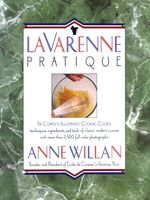Advertisement
Butter
Appears in
By Anne Willan
Published 1989
Dairy butter consists of about 80 percent fat and 20 percent water and whey (milk solids left from the separating process). It is the milk protein in the whey that makes butter spoil quickly and, together with milk sugar (lactose), causes it to scorch when overheated. In the West most butter is made from cow’s milk, but elsewhere butter from the milk of water buffalo, yak, goats and sheep is also available.
The quality of butter is affected by the cream used to make it, which in turn is influenced by the season and the feed of the animal. Color varies from very pale to deep yellow, but producers may add coloring (often annatto) to butter, particularly salted butter, so that it looks uniform throughout the year. Sometimes the cream is allowed to ripen, or a lactic yeast is added to give the butter a pleasant acidity and nutty aroma. For health reasons, most butter is pasteurized, which means that the milk used to make it has been sterilized by heating it briefly to destroy any harmful bacteria. In some countries, raw butter is also available; it has a better taste, but does not keep well. Butter is also graded according to quality in many countries.

